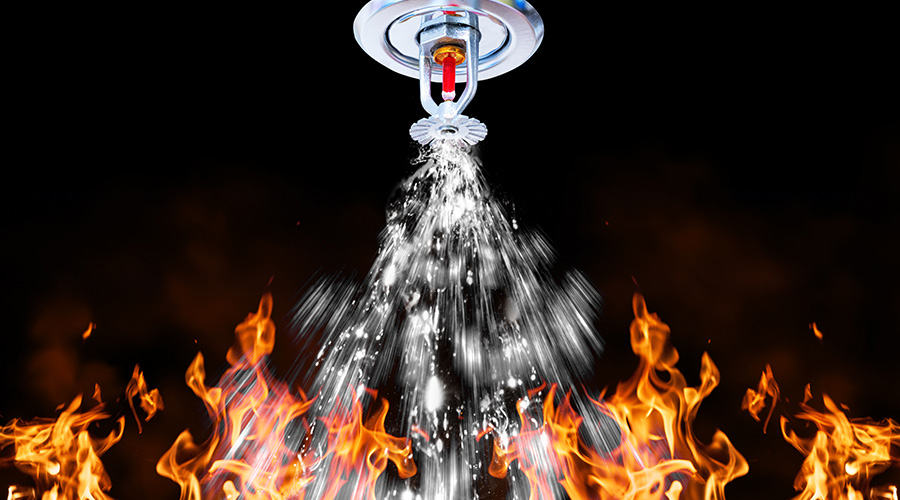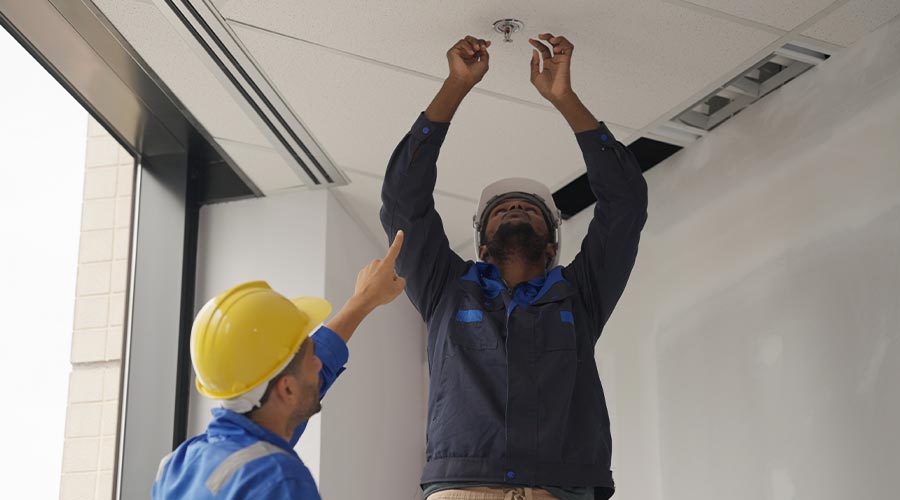Sprinkler Maintenance Guidelines: Start with NFPA 25
NFPA 25, the standard that sets the inspection, testing and maintenance requirements for sprinkler systems, is used fairly universally across the U.S., Lake says. Some municipalities also add their own requirements.
Within the standard, the term "maintenance" refers to procedures that help ensure that the sprinkler system remains in good operating condition. One example would be regularly lubricating the valve stems.
Several steps are key to maintaining a sprinkler system. First is making sure that the valves that control water flowing into the system haven't been inadvertently closed, damaged or painted over, but instead are in an open position so that water can flow, if needed, Isman says. It's frequently said that the number one cause of malfunctioning sprinklers is the fact that they've been closed for some reason, he says. While it's difficult to find firm statistics to back up that assertion, facility executives should regularly verify that their sprinkler valves are open.
"Inspection" refers to a visual check to make sure components are in proper operating condition, Lake says. In addition to regularly checking that the valves are open, facility executives will want to inspect the pipes in the system for corrosion and leaks, and check for hangers that have come loose and sprinkler heads that have been obstructed by dirt or dust.
Testing is more involved, Lake adds. It may mean opening a valve to check the water flow, or removing a sprinkler from the system and sending it to a lab to test its effectiveness. This test typically requires removing at least one percent, but no less than four of the heads, he adds. Moreover, the test actually destroys the heads, so they're not returned to the facility.
Another test is the "main drain" test, done to ensure an adequate water supply, Jelenewicz says. A first step is to read the static pressure in the system when the water is at rest. A next step is to open a valve in an area where the water flow won't flood the facility, and then record the water pressure when the drain is flowing. While the water pressure is naturally going to drop, the goal is to determine if the drop in pressure changes over time. If the water pressure dropped from 80 to 55 PSI the day the system is installed, but drops from 80 to 25 PSI a year later, the system probably has a problem, such as a valve that's closed or partially obstructed.
The testing and inspection schedules vary from one type of system to another. No matter which type of system is installed, however, some tasks will need to take place daily, some weekly and others in different time frames. "You need to have a plan to deal with this," Isman says.
Many facility executives can handle much of the daily and weekly maintenance and inspection activities, such as checking the pressure of a gauge, with their own employees, Isman says. However, actually testing the system usually requires the services of a licensed professional who has the equipment that's needed. The specific tests used will depend on the type of sprinkler. For instance, one test for a dry pipe system is to check the ability of the dry pipe valve to sense air pressure, Isman says.
It's important to keep in mind that even if a specific city or town doesn't require scheduled sprinkler testing, regular tests are considered a prudent standard of care, Jelenewicz says. If a fire occurs, you want to be confident the sprinklers will work as they're intended to. Moreover, facility executives will want to record the fact that the test took place, and then store the record in a safe, fire-resistant place, he adds.
Along with the requirements of NFPA 25, facility executives should know several other facts about their sprinkler systems, Isman says. For starters, they need to know the locations of the water supply control valves. Facility executives also should know the location of drain connections, so they can relay this information to any professionals working on the system, and so that the drains are kept clear. Facility executives also need to know whether any sections of the system differ from the rest, Isman adds. For instance, a facility that's protected primarily by a wet sprinkler system may include a dry system for an attic area.
Finally, facility executives should know whether their sprinkler system is electronically monitored. In a growing number of facilities, a security company monitors the sprinkler system, as well as the access control system. The company may monitor water flow into the system, and thus detect any tampering to the valves before serious damage is done. The testing schedule usually is slightly modified for monitored systems.
While maintaining a thorough and ongoing sprinkler maintenance, inspection, and testing program requires some discipline, the results are compelling. "Although these systems are rarely used," Jelenewicz says, "if a fire does occur in your facility, they could mean the difference between life and death." 
Karen Kroll, a contributing editor for Building Operating Management, is a freelance writer who has written extensively about real estate and facility issues.
Related Topics:













